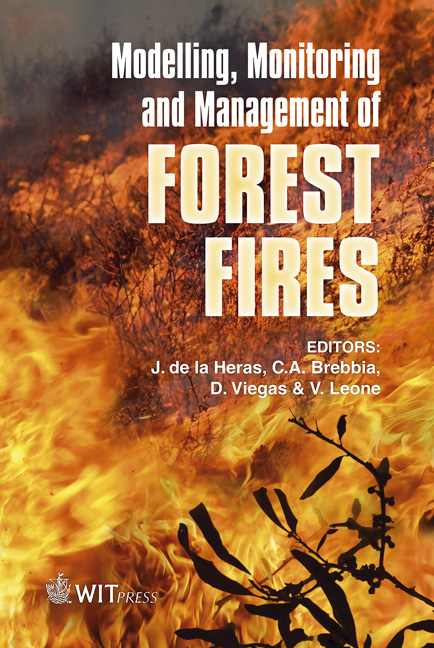Acoustic Characterization Of A Forest Fire Event
Price
Free (open access)
Transaction
Volume
119
Pages
9
Page Range
171 - 179
Published
2008
Size
1,999 kb
Paper DOI
10.2495/FIVA080181
Copyright
WIT Press
Author(s)
D. X. Viegas, L. P. Pita, F. Nielsen, K. Haddad, C. Calisti Tassini, G. D’Altrui, V. Quaranta, I. Dimino & H. Tsangaris
Abstract
In this paper, a methodology to perform the acoustic characterization of a forest fire event is reported. A review of the influence of fuel type (litter, grass, shrubs, slash), fuel moisture, and weather factors on fire behaviour and on the relative acoustic spectrum has been carried out. Fire produced noise is basically due to periodic fluctuations of whirling structures at the fire’s basis; these structures have natural low frequencies and are inversely proportional to fuel surface. The analysis of fire emission properties has been based upon laboratory and field testing, consisted of the burning of different fuels placed on tables or on field plots. The objectives of the trials have been the evaluation of fire acoustic spectra, with respect to the different fuel types and fire conditions. The frequency content of the acoustic signals has been evaluated; the results obtained have confirmed the main spectrum features reported in literature. Tests have also been made to evaluate the fire radiated heat to fibre optic sensors with cables in open air, buried or inside the flames, in order to characterise sensors behaviour with respect to fire, wind and smoke. The results of the tests have been used in the design phase of a new fire monitoring system made up of acoustic sensors, which is able to detect and track fires from the beginning, and fibre optic sensors, for a capillary monitoring of temperature in forest areas. Keywords: forest fire, acoustic sensors, fibre optic sensors.
Keywords
forest fire, acoustic sensors, fibre optic sensors.





